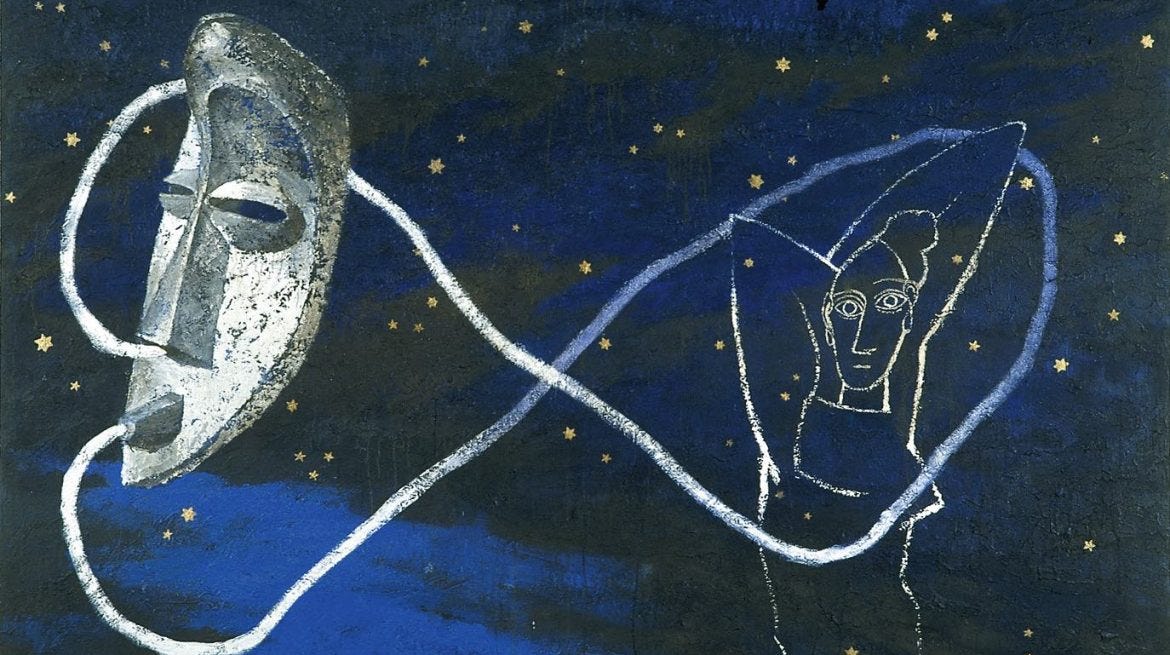🔅 The Black Lives Matter Bandwagon
Johannesburg's Hidden Treasure, and China's African Arms Bazaar
Photo of the Day
Spotlight Stories
The Black Lives Matter Bandwagon: Arts Institutions' Kneejerk Reactions
South Africa-born painter Gavin Jantjes, a key figure in the British black art movement of the 1980s, has called out British arts institutions for their "knee jerk" and "stopgap" responses in the aftermath of the Black Lives Matter movement.
According to Jantjes, under-pressure organisations approached him to buy work that they had ignored for decades.
It's like the art world equivalent of a bad ex sliding into your DMs years later, hoping you've forgotten how they ghosted you the first time around. Jantjes, however, is having none of it. He believes that these institutions are merely looking to paper over the cracks rather than meaningfully engaging with the work and its creators.
From Apartheid Critiques to Abstract Paintings: Jantjes' Journey
Jantjes first gained prominence in the UK with an exhibition at the ICA in 1976, becoming one of the first black artists to hold a show there. His work during that period focused on the apartheid regime in South Africa, mixing newspaper reports, magazine images, and text to create powerful collages. Jantjes was even barred from returning to his home country because his work was critical of the regime.
Throughout his career, Jantjes has navigated the challenges of being a black artist in a predominantly white art world. He studied under Joseph Beuys in Germany, who once asked if Jantjes had an "inferiority complex" when critiquing his work.
Jantjes acknowledges that things have opened up for black artists in recent years, with dozens of shows featuring their work in 2023 alone. However, he believes this is an attempt to "correct the record" because many black artists from the 70s and 80s were deliberately overlooked.
It's like the art world is suddenly realizing that, hey, maybe those black artists were onto something after all! But Jantjes isn't impressed by this belated recognition. He knows that the works were good then, which is why they're still being collected now.
From Overlooked Mounds to Golden Opportunity
Steve Chingwaru, a 26-year-old geometallurgist, has turned Johannesburg's iconic mine dumps from a dusty nuisance into a potential goldmine.
Growing up on the city's East Rand, Chingwaru thought the flat-topped mounds were a natural feature of the landscape. Little did he know that these piles of rock and earth, known as "tailings," contained a staggering 420 tonnes of "invisible gold" worth $24 billion.
Chingwaru's groundbreaking research, which began as a master's thesis and was later upgraded to a PhD (because it was that good), has caught the attention of mining companies worldwide. They're flying him to Johannesburg on a weekly basis, eager to tap into his expertise and extract maximum value from the long-overlooked mine waste.
The key, according to Chingwaru, lies in targeting the gold hidden in pyrite, a mineral that old and current extraction techniques have been ignoring.
From Humble Beginnings to Global Demand
Chingwaru's remarkable discoveries are made even more impressive by his challenging upbringing. Born in Zimbabwe, he moved to South Africa as a child to escape the economic downturn that left his family struggling to make ends meet. Despite long commutes and late nights, Chingwaru excelled academically, driven by his mother's advice that education would pave the way to a brighter future.
Now, with job offers pouring in from Australia, Canada, Germany, and the United States, Chingwaru is weighing his options carefully. While the allure of new countries and cultures is strong, he's also passionate about taking his research beyond the page and getting involved in the extraction work itself.
Whatever path he chooses, one thing is certain: Steve Chingwaru's golden touch is set to reshape the mining industry and help usher in a more sustainable future.
China's Arms Bazaar: Wooing Africa with Weapons
China's sales teams are hitting the African battlefields, armed with brochures and freebies, in search of new customers for their weapons.
And it seems to be working—no fewer than 21 countries in sub-Saharan Africa took major deliveries of Chinese arms between 2019 and 2023. China has dethroned Russia as the largest arms supplier to the region, with Russia's exports falling by 44% in the last four years.
The Chinese Recipe for Success
So, what's China's secret sauce?
For starters, they're selling arms at cut prices, bundled with flexible financing, military cooperation, and training for officers. Plus, China is more than willing to throw in weapons as sweeteners to other deals or to improve diplomatic and trade relations.
As one expert put it, "The Chinese are in a position where they can say that they will deliver you a whole new army and throw a railroad in."
The Economist takes a closer look.
Food for Thought
“You must attend to your business with the vendor in the market, and not to the noise of the market."
— Beninese Proverb







